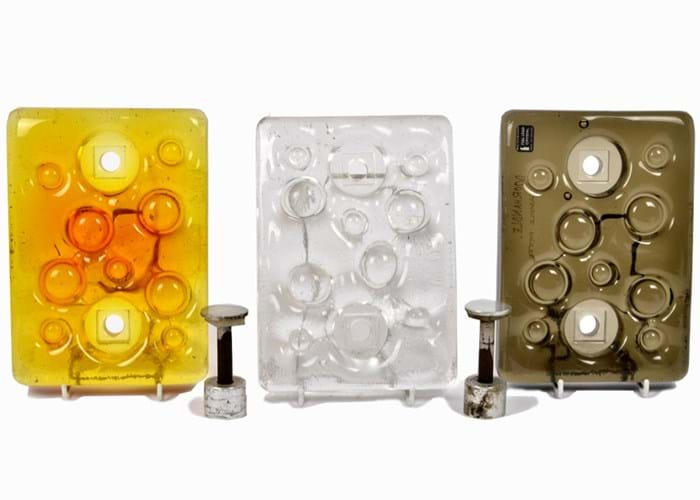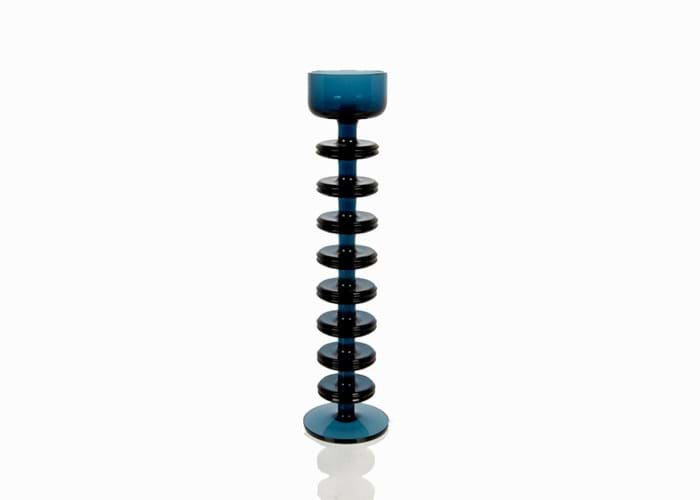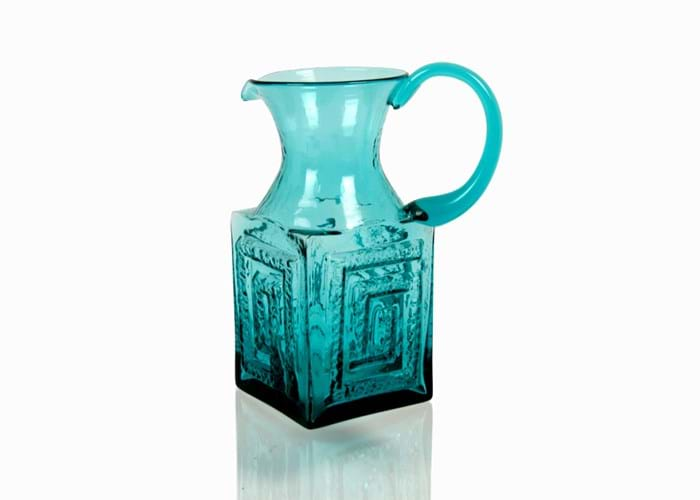
As Britain passed from post-war austerity to relative affluence in the 1960s and 70s, the era’s art and objects reflected this economic evolution – none more so than in glass-making.
A cadre of pioneering glass designers emerged in Britain after the Second World War. They produced handmade pieces that, while owing much to smooth, sleek styles created by their established Scandinavian and Italian counterparts, had textures, humorous shapes and bright, almost garish colours that were distinctively British.
A sale at Special Auction Services next week (8 January) features pieces with these qualities by three such British design factories: Whitefriars, Dartington and Wedgwood King’s Lynn.
Finnish influence
“This is an era of great experimentation in glass-making, with a lot of Scandinavian influence on our designers and blowers,” says Thomas Forrester, director of SAS.
“These designers are not looking back – they’re only looking forward,” he says, pointing to the textured work by Finnish designers Timo Sarpaneva (1926-2006) and Tapio Wirkkala (1915-1985), both working for Finland’s Iittala factory, as key inspirations for British glass makers.
Take Whitefriars for instance, founded in the 18th century but an established player in the Modernist art movement when, in 1954, it hired Geoffrey Baxter after completing his design diploma at the Royal College of Art.
Baxter’s role was to help Whitefriars compete with Scandinavian imports and he became best known for producing quirkily-shaped vessels such at the Drunken Bricklayer and the Banjo.
Beyond the Banjo
The SAS sale on January 8, which also features cigarette cards and sporting items, goes beyond the Banjo with rare items amongst the 213 glass lots, the third tranche of a single-owner collection.
“These pieces have their own unique Britishness,” Forrester adds. “Some are prototypes, but most were mass-produced for sale to the ‘thinking middle classes’ at Peter Jones and Heal’s.”
ATG asked Forrester to pick out five rare lots from the three key factories featured, starting with his choice of the sale’s star lot.
1. Estimate £100-150

One of a trio of large, rectangular architectural glass slabs or door handles by Geoffrey Baxter for Whitefriars. Offered as a single lot at SAS, they are estimated at £100-150.
Geoffrey Baxter for Whitefriars, a trio of uncatalogued large rectangular architectural glass slabs or door ‘handles’, 21 x 15cms (pictured above) – Lot 198
A single-owner post-war British glass collection wouldn’t be complete without a Geoffrey Baxter Banjo vase (there are two in the SAS sale, both estimated at £400-600) and a Drunken Bricklayer (there are six, estimates ranging from £150 to £600).
“Banjo vases are sure-fire Whitefriars winners in the market and there’s enough out there to satisfy demand,” says Forrester. “But these glass slabs or front door furniture are interesting, as you don’t think of Whitefriars as doing architectural pieces. Instead of a door handle, these were to be used like finger plates and are super-rare. One still has its factory label on the back.”
The low estimate is on account of SAS never having encountered the glass slabs before. “We just don’t know what they’ll sell for, but they could make £600,” Forrester says.
2. Estimate £100-150

SAS has five ‘Cucumber’ vases designed by Geoffrey Baxter for Whitefriars for sale (estimates £50-150) on January 8. This textured Cucumber vase, 29cm high, pattern 9679, is rare because of its aubergine colour.
Geoffrey Baxter for Whitefriars, textured Cucumber vase in aubergine, pattern 9679, 29cm high (Lot 148 pictured above) – Lots 88 and 148
SAS has no less than five ‘Cucumber’ vases for sale (estimates £50-150) but Forrester highlights lots 88 and 148. “They look shape- and texture-wise like a cucumber, but the rare thing with these two is their colour – aubergine. Lot 148 has a lighter gauge and colour than lot 88 but they are similar pieces.”
3. Estimate £150-200

Ronald Stennett-Wilson for Wedgwood King’s Lynn, a single 8-disc ‘Sheringham’ candlestick, RSW13, in dark blue, 30cm high – estimate £150-200. Such candlesticks usually featured an odd number of discs and one with eight are rare.
Ronald Stennett-Wilson for Wedgwood King’s Lynn, a single 8-disc ‘Sheringham’ candle stick, RSW13, in dark blue, 30cm high (pictured above) – Lot 42
Stennett-Wilson was a prominent post-war glass designer when he established King’s Lynn Glass in 1967, later selling the firm to Wedgwood.
Influenced by Scandinavian design, Stennett-Wilson produced vases, goblets and paperweights, and won a Queen’s Design Award for Industry for his Sheringham range of candlesticks.
These varied in height from one to nine discs, in five colours. SAS says that candlesticks of 8 discs are rare as they were only made as trial pieces. “Normally Sheringham candlesticks were made with an odd-number of discs, which looks better. Aesthetically, six or eight discs looks wrong. I don’t think they made it to market.”
4. Estimate £100-150

Frank Thrower for Dartington Glass, an FT58 ‘Greek Key’ water or lemonade jug in kingfisher blue, 22.5cm high – estimate £100-150. The jug was adapted from a vase design, one of few conversions to be made.
Frank Thrower for Dartington Glass, an FT58 ‘Greek Key’ water or lemonade jug in kingfisher blue, 22.5cm high (pictured above) – Lot 17
A protégé of Stennett-Wilson, Thrower (1932-87) played a part in setting up Dartington Glass in Devon in 1967 to produce Scandinavian-style glass. Thrower became the firm’s chief designer and sales director.
This functional jug, adapted from the large Greek Key vase design, was made to be used but SAS believe it is very rare. A diagram is featured in the Dartington Glass - The First 20 Years guide by Linda and Stuart Smithson, stating that very few of these conversions were known to have been made.
5. Estimate £100-150

Frank Thrower for Dartington Glass, pattern FT35, a moulded ‘Marguerite’ style vase, 42cm high – estimate £100-150.
Frank Thrower for Dartington Glass, pattern FT35, a moulded ‘Marguerite’ style vase (pictured above) – Lot 5
This piece, standing 42 cm in height, has a much heavier construction than the standard production item, and has had the usually flared rim inverted, step finished and polished. It is thought to be a one-off and therefore probably unique.
This sale can be viewed on thesaleroom.com at 10am on Tuesday, 8 January.





